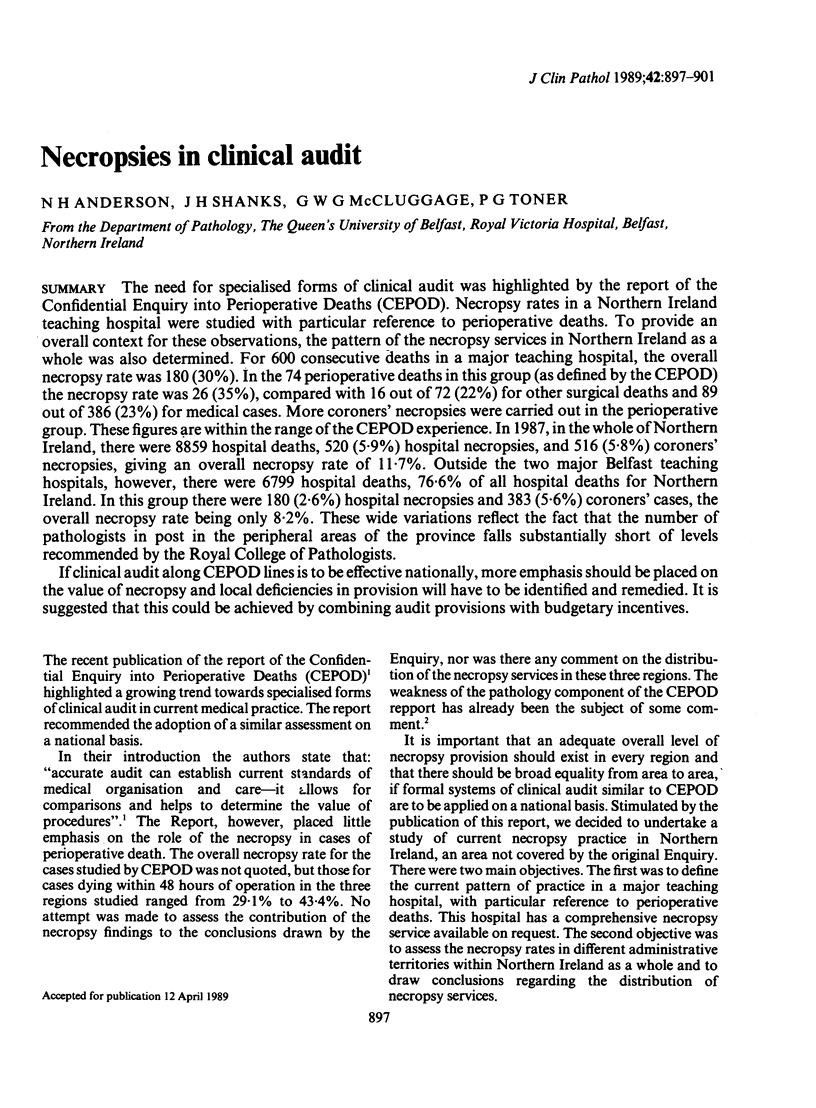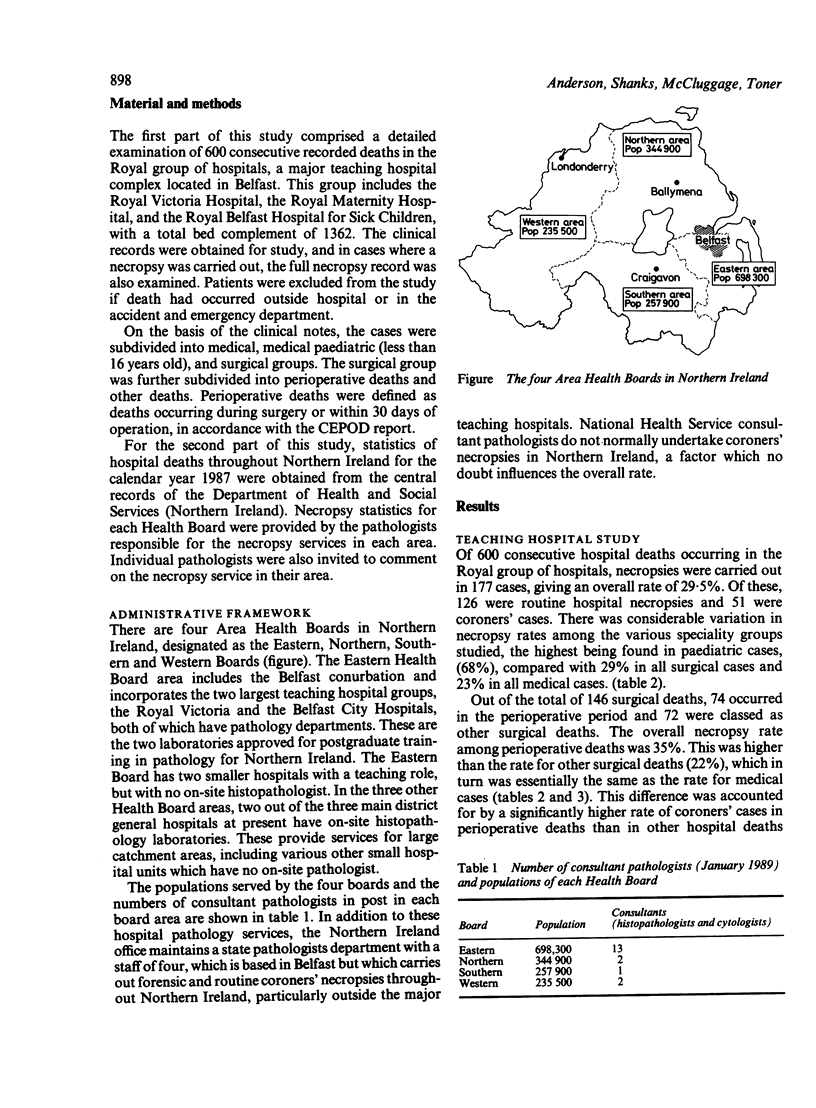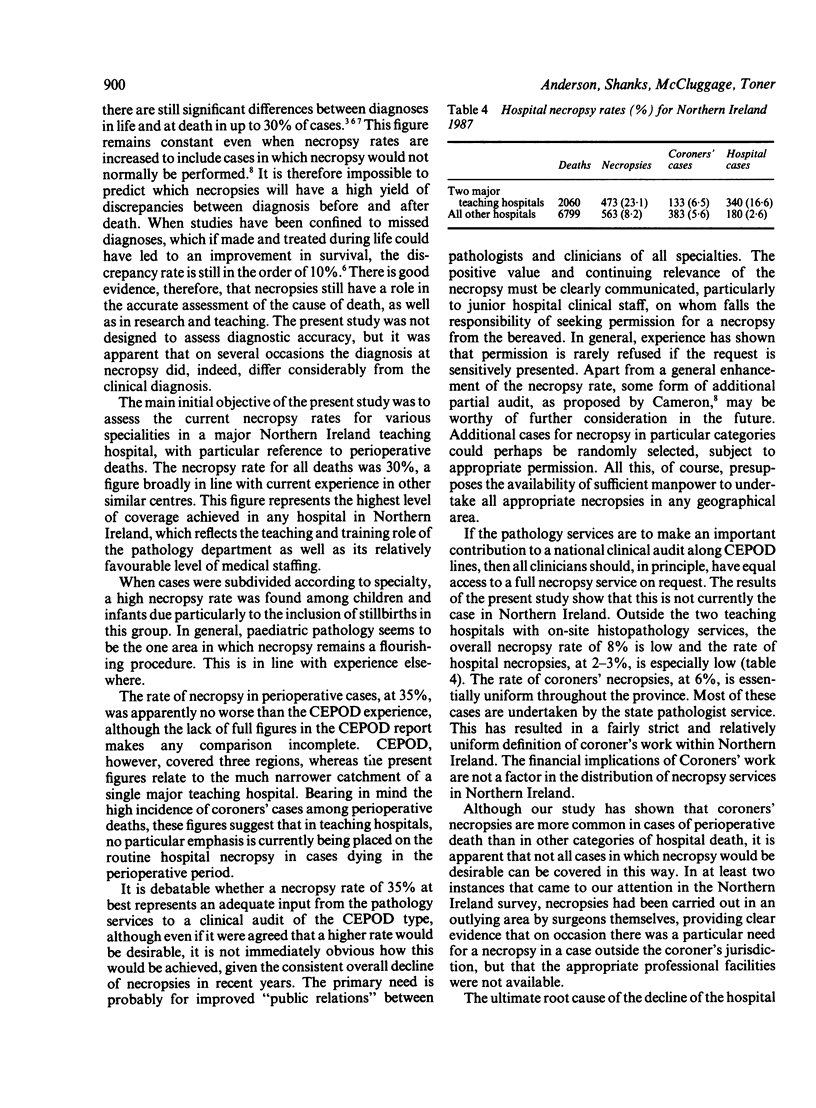Abstract
The need for specialised forms of clinical audit was highlighted by the report of the Confidential Enquiry into Perioperative Deaths (CEPOD). Necropsy rates in a Northern Ireland teaching hospital were studied with particular reference to perioperative deaths. To provide an overall context for these observations, the pattern of the necropsy services in Northern Ireland as a whole was also determined. For 600 consecutive deaths in a major teaching hospital, the overall necropsy rate was 180 (30%). In the 74 perioperative deaths in this group (as defined by the CEPOD) the necropsy rate was 26 (35%), compared with 16 out of 72 (22%) for other surgical deaths and 89 out of 386 (23%) for medical cases. More coroners' necropsies were carried out in the perioperative group. These figures are within the range of the CEPOD experience. In 1987, in the whole of Northern Ireland, there were 8859 hospital deaths, 520 (5.9%) hospital necropsies, and 516 (5.8%) coroners' necropsies, giving an overall necropsy rate of 11.7%. Outside the two major Belfast teaching hospitals, however, there were 6799 hospital deaths, 76.6% of all hospital deaths for Northern Ireland. In this group there were 180 (2.6%) hospital necropsies and 383 (5.6%) coroners' cases, the overall necropsy rate being only 8.2%. These wide variations reflect the fact that the number of pathologists in post in the peripheral areas of the province falls substantially short of levels recommended by the Royal College of Pathologists. If clinical audit along CEPOD lines is to be effective nationally, more emphasis should be placed on the value of necropsy and local deficiencies in provision will have to be identified and remedied. It is suggested that this could be achieved by combining audit provisions with budgetary incentives.
Full text
PDF




Selected References
These references are in PubMed. This may not be the complete list of references from this article.
- Cameron H. M., McGoogan E., Clarke J., Wilson B. A. Trends in hospital necropsy rates: Scotland 1961-74. Br Med J. 1977 Jun 18;1(6076):1577–1580. doi: 10.1136/bmj.1.6076.1577. [DOI] [PMC free article] [PubMed] [Google Scholar]
- Cameron H. M., McGoogan E., Watson H. Necropsy: a yardstick for clinical diagnoses. Br Med J. 1980 Oct 11;281(6246):985–988. doi: 10.1136/bmj.281.6246.985. [DOI] [PMC free article] [PubMed] [Google Scholar]
- Goldman L., Sayson R., Robbins S., Cohn L. H., Bettmann M., Weisberg M. The value of the autopsy in three medical eras. N Engl J Med. 1983 Apr 28;308(17):1000–1005. doi: 10.1056/NEJM198304283081704. [DOI] [PubMed] [Google Scholar]
- Landefeld C. S., Chren M. M., Myers A., Geller R., Robbins S., Goldman L. Diagnostic yield of the autopsy in a university hospital and a community hospital. N Engl J Med. 1988 May 12;318(19):1249–1254. doi: 10.1056/NEJM198805123181906. [DOI] [PubMed] [Google Scholar]
- Peacock S. J., Machin D., Duboulay C. E., Kirkham N. The autopsy: a useful tool or an old relic? J Pathol. 1988 Sep;156(1):9–14. doi: 10.1002/path.1711560105. [DOI] [PubMed] [Google Scholar]
- Stevanovic G., Tucakovic G., Dotlic R., Kanjuh V. Correlation of clinical diagnoses with autopsy findings: a retrospective study of 2,145 consecutive autopsies. Hum Pathol. 1986 Dec;17(12):1225–1230. doi: 10.1016/s0046-8177(86)80564-0. [DOI] [PubMed] [Google Scholar]


